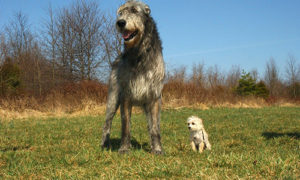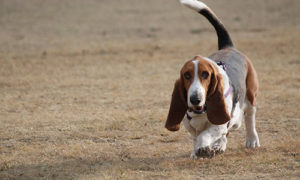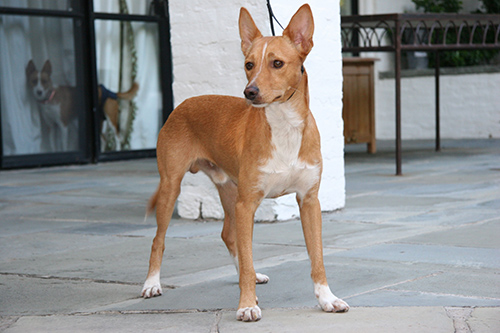
Historians believe that the Portuguese Podengo and similar Podengo-like dogs were transported by the Phoenicians and Romans, possibly brought along as hunting dogs or trade for the Portuguese and Spanish. However, artwork verifies their existence in the Mediterranean as early as the tenth century.
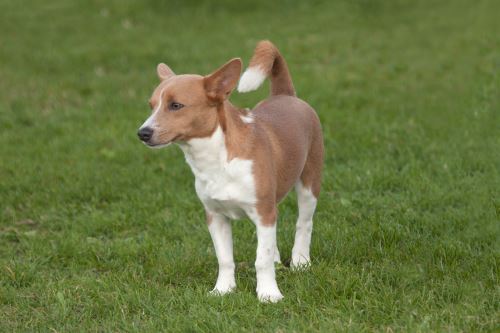
These dogs’ descendants evolved into today’s Portuguese Podengo, Ibizan Hound, and Galgo Espanol. The Portuguese developed the Podengos in three sizes (Grande, Medio, and Pequeno) to hunt different quarries on varying terrain. Today they are the most common hunting dogs in Portugal, though still an uncommon breed outside their homeland.
The breeds more recent claim to fame comes by Tito, Rosa, and Nikki, three Medios that appeared in numerous Hollywood movies. A primitive hunting dog, today’s Portuguese Podengo, occurs in three sizes; Grande, Medio, Pequeno, with the Pequeno designated as a separate breed.
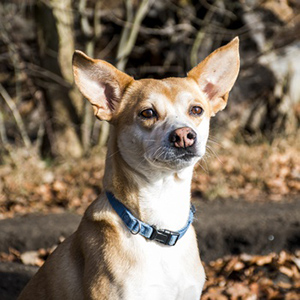
The Portuguese Podengo Medio and Grande are well-proportioned dogs that are almost square in proportion. The Pequeno is distinctly longer bodied than its two larger brothers. The breed is recognizable for its long wedge-shaped head and triangular prick ears that are highly mobile.
The neck is straight and strong; the shoulders are long, inclined, and sturdy; forelegs, straight and lean; and hindquarters well muscle and clean. Bone is denser in larger dogs. Their feet are oval with long, slightly arched toes. Also, the sickle tail is set moderately high and is carried at different heights.
Portuguese Podengo Breed Facts

Activity level: In Portugal, Podengos are primarily hunting dogs, living in outdoor kennel environments with limited human contact except for care and hunting time. These dogs require early socialization and training to develop into amenable pets, as well as lots of exercise time. The Podengos are prey-oriented hunters that are fearless and extremely fast and should be kept on a leash when out of safely fenced areas.
- POPULARITY: Very rare
- FAMILY: Primitive
- AREA OF ORIGIN: Portugal
- DATE OF ORIGIN: Ancient
- ORIGINAL FUNCTION: Hunting rabbits
- TODAY’S FUNCTION: Hunting rabbits, lure coursing, companion
- OTHER NAME: Portuguese Warren Hound
Temperament
This breed is an intelligent and independent hunting dog. Podengos are quick to learn, but it can be a challenge to train. They are loyal and attentive and can make excellent watchdogs and companions for owners who invest the time into their socialization and training.
Grooming a Portuguese Podengo
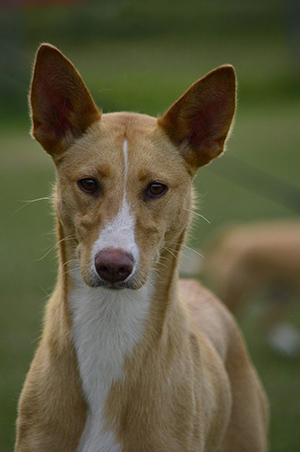
Weekly brushing is all that’s needed. This dog is a natural breed that only requires extensive brushing during the once-annual shedding. The coat sheds in large sections, beginning at the base of the neck, down the center of the back, and finally down the body’s sides. Brushing during shedding periods is essential. Its face and feet can be tidied up with scissors.
Coat: The smooth coat is short and thick, and the wire coat is rough and harsh and not as dense as the smooth. Also, the smooth coat has an undercoat, while the wire does not. Besides, the wire coat includes a distinct beard. Neither coat should be silky or soft.
Color: Varying shades of yellow or fawn, always with white. The coat can also be primarily white with patches of yellow or fawn.
Health
- Major concern: none
- Minor concern: none
- Occasionally seen: Legg Calves, patellar luxation
- Suggested tests: none
- Life span: 10-12 years
- Size: Grande: 22-28 inches; 44-66 pounds. Medio: 16-22 inches; 35-44 pounds
Buying a Portuguese Podengo Information and Breeder Advice

Get on a breeder’s waiting list, as often breeders schedule breedings based on demand from buyers. It is possible to import a puppy from Portugal, but this requires considerable preparation, traveling overseas, and bringing home an eight to ten-week-old puppy.
Parent club: American Portuguese Podengo Medio Grande Club; founded 2008
Rescue: The parent club is willing to assist anyone willing to help find homes for any Podengos or Podengolike dogs, though no formal rescue group is active at this time.



